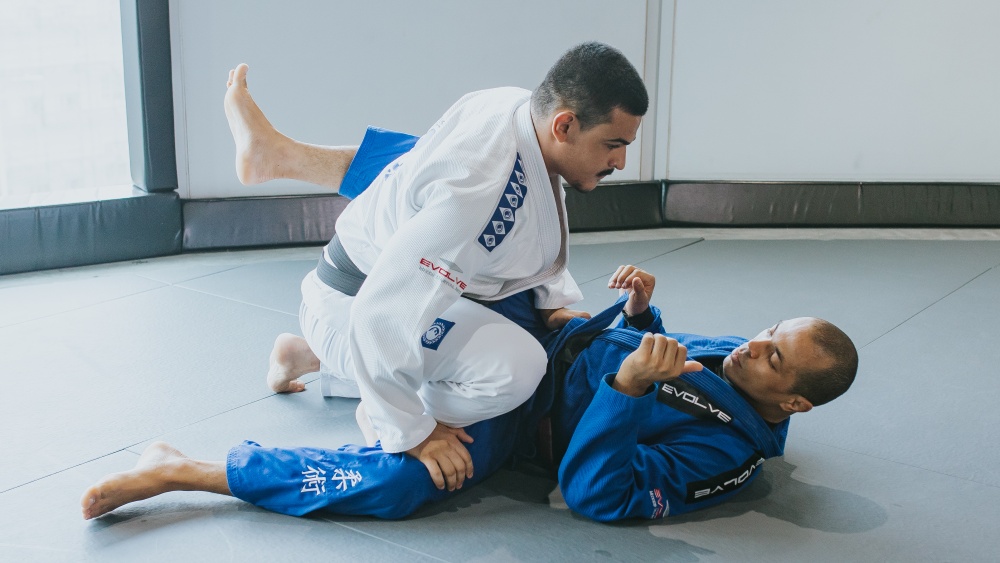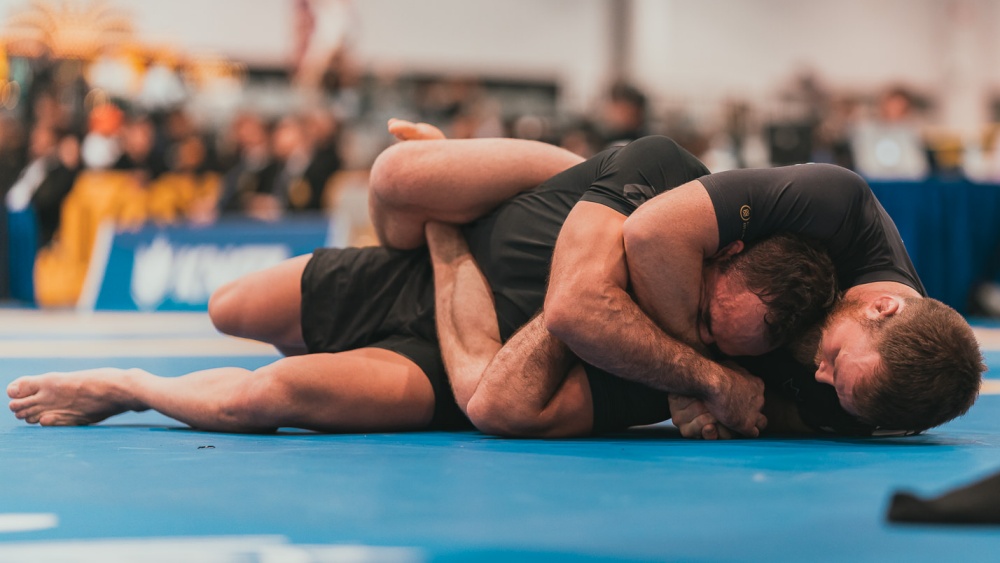Passing the guard of a fully resisting opponent in BJJ can be challenging. As a guard passer, you have to be wary of many things. First, you have to close the distance and apply your preferred grips to prevent the opponent from getting theirs, and at the same time, set up your guard pass.
Second, you have to control the opponent’s body. Controlling the opponent’s head will significantly increase your chance of passing their guard. Once you control the head, immobilizing the body will be much easier to do.
This article will discuss a technique that focuses on pinning the opponent’s leg to pass their guard called the knee pin pass.
The Knee Pin Pass
The knee pin pass is one of the most fundamental open guard passing techniques taught to beginners. It is a pass that follows key essential elements required to effectively pass the guard, such as controlling the legs, hips, and head.
Fundamental techniques like the knee pin pass are used and proven effective even against the highest levels of competition. You can also combine this pass with your other techniques to elevate its effectiveness further.
This technique is typically used to pass the open guard. Starting from the standing pass position inside the opponent’s supinated open guard, control the opponent’s left knee using your left hand and hold their hip using your right as you maintain a solid staggered standing stance. Push their knee down to create some space.
As you drop the opponent’s left knee to the ground, lower your base and drive your left knee to the mat, overlapping the opponent’s upper left leg and thus pinning it. Use your right leg to create a solid base to lock the opponent’s right leg on top of yours.
Grab the opponent’s left knee using your left hand and drop your weight to their upper body, creating a chest-to-chest connection to put pressure. Doing this prevents the opponent from bringing their right knee across your chest to create a knee shield.
Driving your left knee and chest to pin the opponent’s upper body should be done in one motion after dropping their left leg on the mat. Move your left hand from gripping their left knee and use your left hand to control the head.
Remove your right hand from their right hip and grab an underhook on their right arm to crossface the head. Remember not to give the opponent the underhook from this position, as they can enter the half guard.
To pass, you can either do the windshield wiper, switch base with your right leg and walk back, or move into their left leg, clearing it away. Complete your pass by going to side control, ensuring that you keep the crossface, and block their hips with your body.
No-Gi Knee Pin Pass
When translating passes from gi to no gi, adjustments have to be made because of additional grips. In gi BJJ, you can grip the opponent’s pants, belt, sleeve, collar, and lapel to help neutralize the opponent from passing, whereas in no-gi, such grips are nonexistent. This makes playing and passing the guard more technical and slower-paced in the gi compared to no-gi, where physical attributes and youth may play a bigger role.
The knee pin in no-gi is performed like a standing guard pass. In the gi, you can grab the pants to put the opponent’s leg down and pressure forward their open guard to close the distance and pin the leg. However, in no-gi, you mainly use your hand to pin the leg and control the hip of the opponent while you angle out to the pinned leg’s side to pass.
Starting from the opponent’s seated open guard, maintain a staggered stance and post on their forehead to keep the distance. Change your level and go down to grab their feet to force them into a supinated open guard.
From here, maintain the distance of your legs from their body to prevent sweeps and leg entanglements, and continue to grab the opponent’s knees. Circle around to the side you want to pass and pin their knee to the mat on the same side.
Use your other hand to keep the opponent’s hip on the mat while driving your weight with your main hand on their pinned knee. This will prevent the opponent from going back to guard. Keep circling around until your far leg passes their pinned knee while maintaining knee and hip control.
Once set, push the pinned knee down and drive your shoulder towards their chest. Remove your other hand from the hip and get the far side underhook as your main hand goes behind the head to secure the side control position.
The Knee Pin Pass With Other Guard Passes
The knee pin pass is an effective option to start your passing chain. As previously discussed, mixing the knee pin pass with your other passes will make your passing attempts difficult to stop. Techniques like the shoulder drop knee slide can be worked as an alternative to the knee pin pass.
The shoulder drop knee slide uses your far leg to pin the knee instead of your near leg to pass on the same side. Assuming that you are passing on the left, use your right leg to pin the knee and your left leg as a base to keep your balance strong. Use your right hand to pin the opponent’s hip and your left hand for lapel control. Drive your shoulder to their hip and slide your knee to their pinned leg to pass. Secure side control and move to build your offense from there.
Conclusion
A good tip in passing the guard is to isolate the opponent’s legs and control their hip, head, and arm before moving to the actual pass. This disables many escapes from the defender’s perspective and will force them to panic to regain some form of control. The knee pin pass is worth checking out. It is a very straightforward technique and can help improve anyone’s passing game regardless of rank.
You may also like:

















